



Ghosh et al. 2024. A Feasibility Study of Electric Bicycles: Case of Manikkal Gram Panchayat, Kerala. New Delhi: Council on Energy, Environment and Water; Convergence Energy Services Limited and Energy Management Centre, India.
Micromobility technologies, primarily consisting of e-cycles and low-speed e-mopeds, have been proliferating across the Global South. Low cost of operations, ease of use and charging/swapping are the primary drivers facilitating the uptake of these technologies. These modes are energy-efficient alternatives to internal combustion engines and motorised two-wheelers. Limited public transport services and expensive shared modes of transport make micromobility technologies a lucrative option in rural areas.
In this study, a detailed survey followed by a demonstration exercise of e-cycles was conducted with Anganwadi, Accredited Social Health Activists (ASHA) and women associated with Self-Help Groups (SHGs). The study aims to assess the potential of e-cycles as an alternative to their current travel modes.
The availability of public transport is limited in many regions, specifically in rural areas, leading to increased use of private motorised vehicles for commuting. As economic conditions improve, the aspiration towards owning private modes increases, leading to increased fuel consumption and emissions. Hence, it becomes imminent to delink economic growth from emissions through clean alternatives.
Between March and June 2023, the Convergence Energy Services Limited (CESL) team conducted field visits in Raipur and its adjoining districts in Chhattisgarh, Lucknow in Uttar Pradesh, Nalanda in Bihar, and Trivandrum in Kerala. These visits aimed to assess the potential adoption of technologies such as electric bicycles among people who travel short distances (5-10 km). The team studied current trip durations, the frequency of on-demand trips, and transport-related expenditures to identify the target beneficiaries who could benefit from more convenient commute modes. Initial field visits indicated e-cycles as a viable commute mode to address their aspiration of owning a private vehicle while ensuring zero emissions.
The initial discussions hinted at women government employees, especially Anganwadi, Accredited Social Health Activists and women associated with Self-Help Groups (SHGs) as the potential users of e-cycle for their work travel. Subsequently, CESL and Council on Energy, Environment and Water (CEEW) collaborated with the Energy Management Centre (EMC) of Kerala to conduct an extensive survey and demonstration to assess the viability of electric cycles (e-cycles) as a prospective alternative to the existing commute patterns of the identified beneficiaries at Manikkal Gram Panchayat, known for being one of Kerala’s net-zero Panchayats.
Three different models of e-cycles were made available at the Panchayat office in the month of July 2023. The demonstration of e-cycles conducted at Manikkal Gram Panchayat received enthusiastic response and the identified target groups took the opportunity to take a test ride and provide detailed feedback on their experience. The majority of the beneficiaries (70–75 per cent) believed that e-cycles would reduce fatigue and improve work efficiency, resulting in higher wages. Key findings from the survey and demonstration include:
A detailed Total Cost of Ownership (TCO) was calculated to estimate the economic viability between Internal Combustion Engine (ICE) two-wheelers, electric twowheelers, e-cycles and low speed e-mopeds. It was observed that the e-cycles and low speed e-mopeds are around 56-70 per cent cheaper than their ICE and EV counterparts. Despite having minimal operating costs, the upfront cost of the e-cycles and low-speed e-mopeds (INR 25,000 – INR 50,000) remain a significant barrier for the target groups, hindering their adoption.
Figure 1 TCO comparison of different technologies
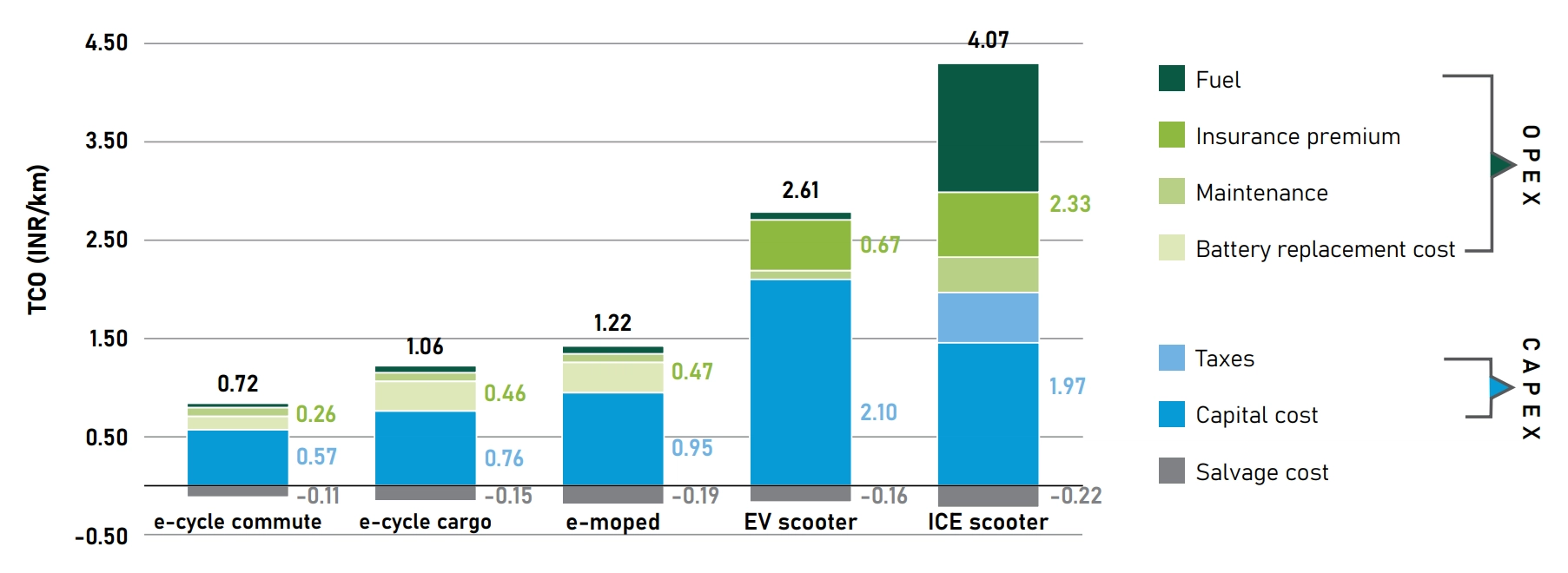
Source: Authors’ analysis
Considering their aspirations, repayment capacity, and specific requirements, the following e-cycle models are suggested for deployment:
Given the presence of the target beneficiaries across different government Institutions pan-India and the similarity in their monthly incomes and operational characteristics, there is a considerable potential demand of around 9.4 lakh e-cycles among ASHA workers, 7.4 lakh e-cycles among Anganwadi workers and 5-6 crore e-cycles among SHG members.
The following recommendations can be implemented to scale up the adoption of e-cycles pan-India:
Figure 2 Additional features requested by the beneficiaries, post e-cycle demonstration
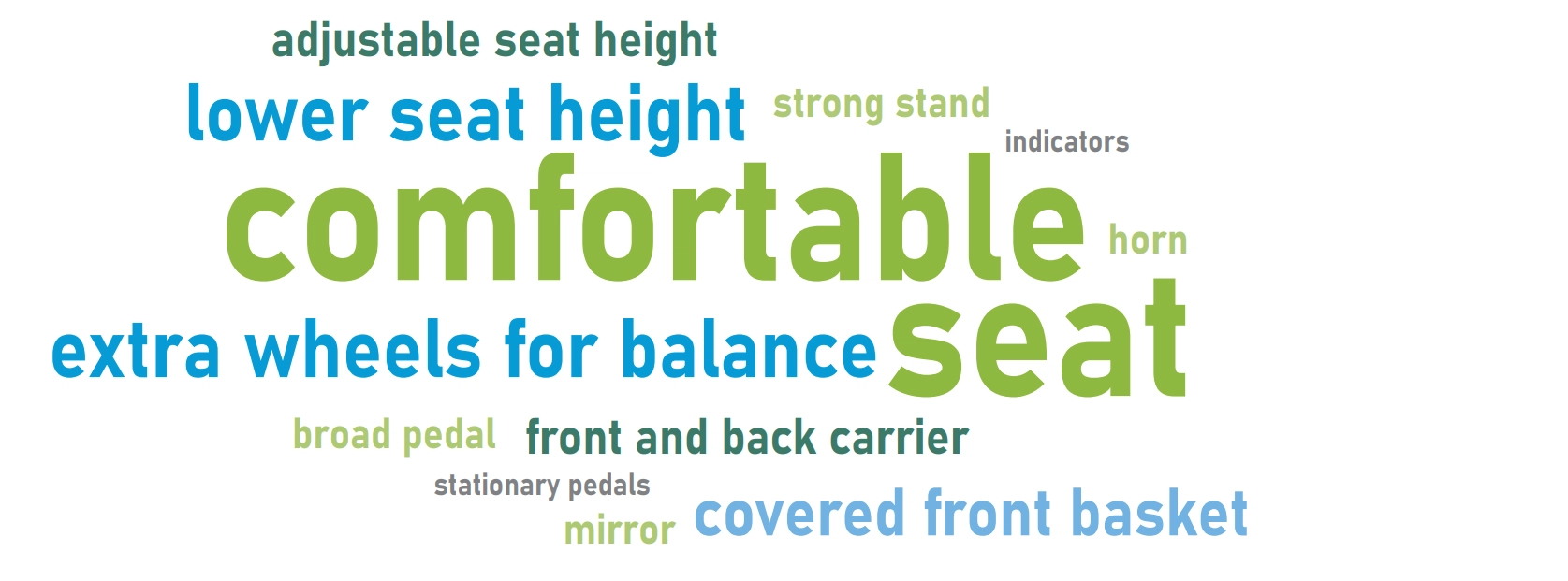
Source: Authors’ analysis
E-cycles emerge as an ideal solution for addressing individual mobility challenges while meeting social aspirations in rural and semi-urban areas. It also promotes energy efficiency and zero emissions targets, contributing to India’s Net-Zero 2070 target. Moreover, e-micromobility technologies provide time-saving advantages, address mobility challenges, augment livelihood prospects, and promote an inclusive transition with women attaining greater self-sufficiency.
E-cycles are bicycles with a supportive power unit, providing pedal assistance or fully throttle-controlled propelling force. Our analysis indicates that the e-cycles and low-speed e-mopeds are around 56-70 per cent cheaper than their ICE and EV counterparts. Thus, they can be a cost-effective solution as compared to other motorised two-wheelers for the Indian market.
E-cycles can be a lucrative option for distances ranging from 5-10 km and can be a suitable substitute for motorised internal combustion engine (ICE) two-wheelers. Thus e-cycles can reduce the exhaust emissions from two-wheelers, which currently occupy the largest share of the total motorised vehicles on Indian roads.
From our survey, we find that the majority of the beneficiaries (70–75 per cent) believed that e-cycles would reduce fatigue and improve work efficiency, resulting in higher wages. Our analysis also indicates that the annual savings are around 70-80 per cent by switching to e-cycles. This could increase the disposable income of the beneficiaries, thereby leading to better education for the children, better healthcare opportunities and better family and social support.
In several regions of rural India, public transport and shared modes are unviable owing to low and dispersed demand, making people rely on private Internal Combustion Engine (ICE) two-wheelers for commuting. Total Cost of Ownership (TCO) reveals that e-cycles and low-speed e-mopeds are around 70% cheaper than ICE two-wheelers, making them economically lucrative.
Our analysis indicates that there is a potential for e-cycles among rural government institutions. In Kerala itself, there is a demand for around 77,000 e-cycles among the Anganwadi, ASHA and SHG workers.
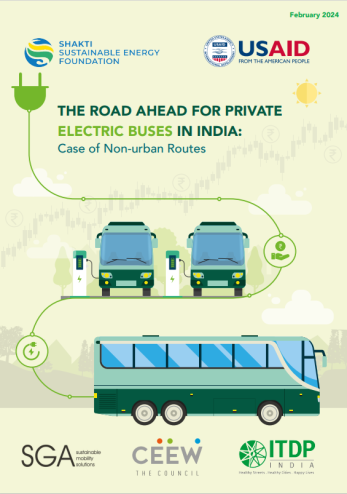
The Road Ahead for Private Electric Buses in India
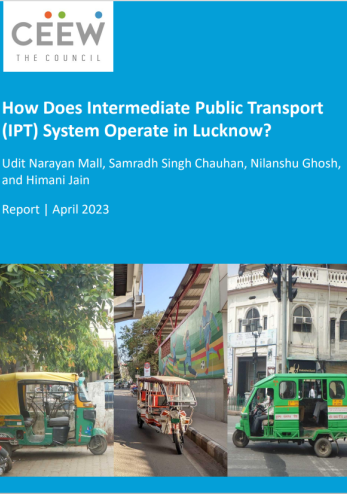
How Does Intermediate Public Transport (IPT) System Operate in Lucknow?
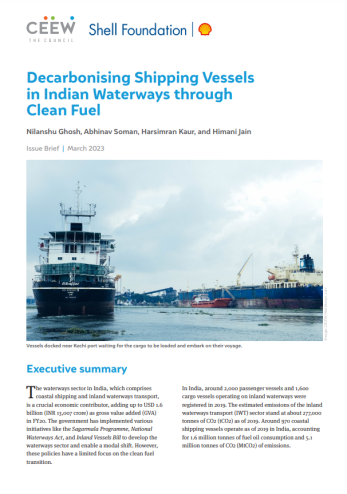
Decarbonising Shipping Vessels in Indian Waterways Through Clean Fuel
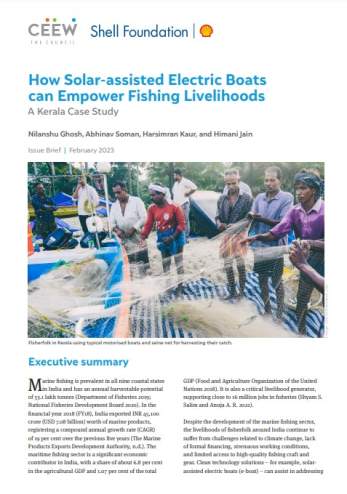
How Solar-Assisted Electric Boats Can Empower Fishing Livelihoods